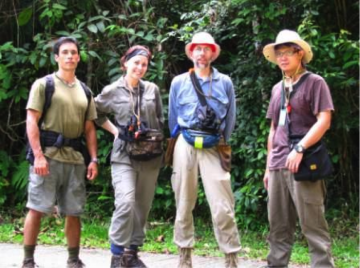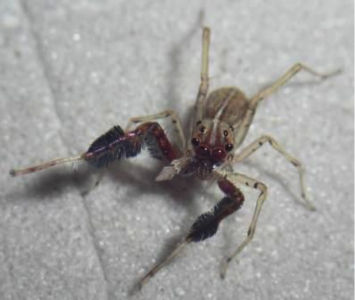Dr. Wayne Maddison, Director of Spencer Entomological Collection at the Beaty Biodiversity Museum recently returned from an expedition in Borneo in search of jumping spiders. This series shares his entomological adventures in the wild.
For the next five weeks, I will be in Borneo along with a student (Edy Piascik) to find jumping spiders. My reason to come to Borneo is to find jumping spiders that live nowhere else. Most biodiversity is local. What you find in Borneo will be different species than what you find in New Guinea, different from Africa, and different from Canada. For jumping spiders, the pattern is particularly striking, because not only are the individual species local, but whole evolutionary groups tend to be local, having evolved and diversified in just one continental area. This means for instance that most South American species are closely related to one another, and not closely related to the species in Australia or Africa. It also means that when you go to an unexplored area, the species you find might not only be new, but very new – distantly related from everything else known.
The group of explorers is known as Team Salticid Borneo, since Salticids, commonly known as jumping spiders, are our focus. We have come together from different backgrounds to search for salticids.

From left to right in the photo, we are: Ch’ien Lee, a wildlife photographer and naturalist based here in Borneo; Edy Piascik, graduate student at the University of British Columbia; myself, with the goofy smile (anticipating cool salticids); and Alex Ang, a musician from Malaysia with an interest in spiders and scorpions.
In the northeast edge of the Malaysian state of Sarawak lies Gunung Mulu National Park, a mountainous area with wonderful forests. It’s a prime destination for ecotourists because of its amazing limestone pinnacles and striking biodiversity. For us, the attraction is spiders.
We need to settle in and get our bearings. Tomorrow, the serious work begins. But, we couldn’t help but look for spiders, for just a few moments. Alex found this cute little Neobrettus whose first legs have striking brushes on them. As she walks, her first legs are in constant motion, waving up and down, and this motion is made especially visible by the brushes. Why it might help the spider to make such a fuss with its legs, we don’t know:

Neobrettus female, from Mulu.
Originally published at Scientific American, Wayne Maddison’s Spiders in Borneo Series
